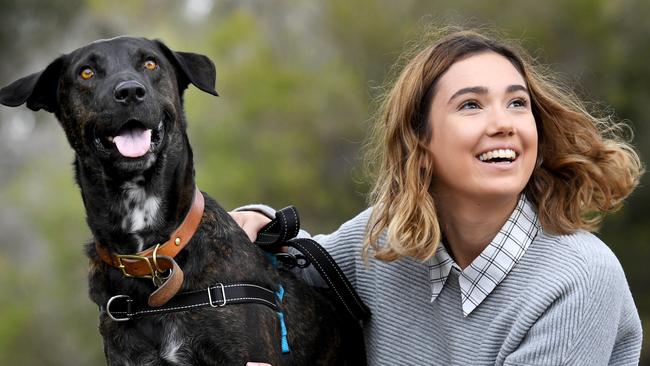How greyhound rescue Millie became Australia’s first bionic dog
Forget about RoboCop, Millie is Australia’s first robo-dog with a 3D-printed front paw. See how she got to where she is and why greyhounds make such great pets.
Pets and Wildlife
Don't miss out on the headlines from Pets and Wildlife. Followed categories will be added to My News.
Greyhounds never were on lifelong dog lover Nora Anderson-Dieppe’s radar as potential pets until a chance encounter in a Sydney park changed everything.
“I met a greyhound while walking my dogs, Yuki and Akira, and thought, why is this dog covered in scars?” she said.
Nora started researching — and was horrified by what she learned.
According to Animals Australia, 20,000 greyhound puppies are born each year but most will never race.
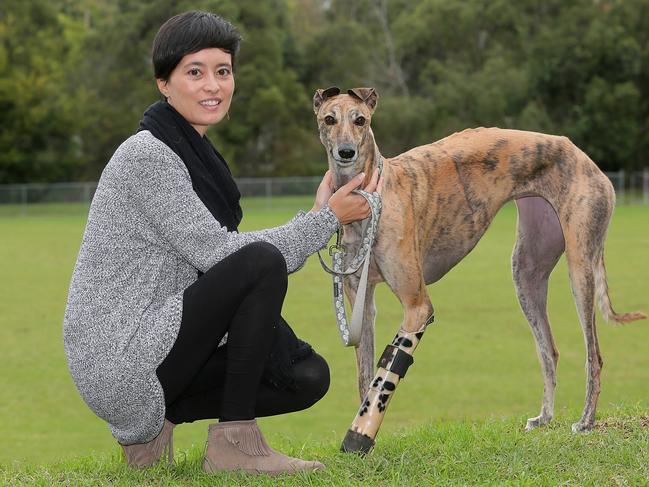
The Special Commission of Inquiry into the Greyhound Racing Industry found up to 70 per cent of the 97,783 dogs bred in the last 12 years were killed after being deemed uncompetitive as racing dogs.
Life can be tough even for those greyhounds surviving the track — only about six per cent are rehomed.
Nora signed up to volunteer with a local greyhound rescue group started fostering dogs awaiting adoption.
Then, in April 2013, an industry contact told Nora about an 11-week-old puppy facing euthanasia due to a mysterious injury.
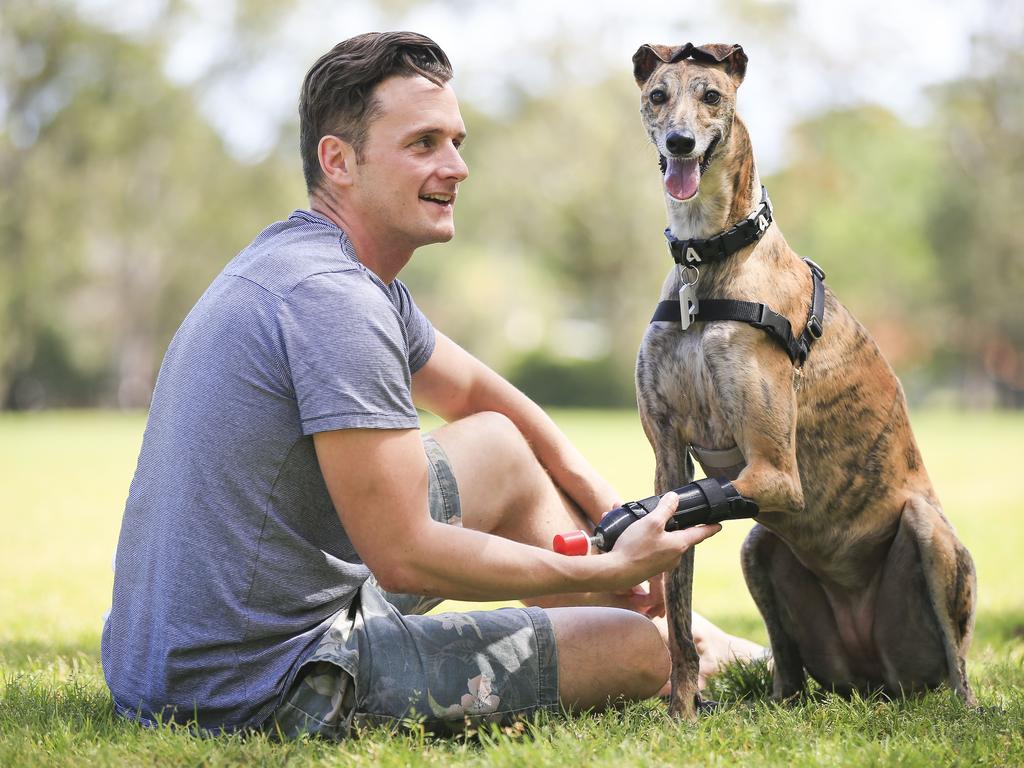
The puppy was living with a professional whelped, who assists with the birth of litters and raises puppies until they are old enough to start training.
“The lady said, “She’s missing a few toes,”’ Nora said.
“She said the mother dog had bitten them off.”
DOGS OF OZ COMP
Do you have Australia’s Top Dog? Enter here and WIN!
Nora and husband Ed took the tiny brindle puppy home to Sydney’s North Shore and settled her in.
She already had a name – Millie – and the couple figured there was not much point in changing it.
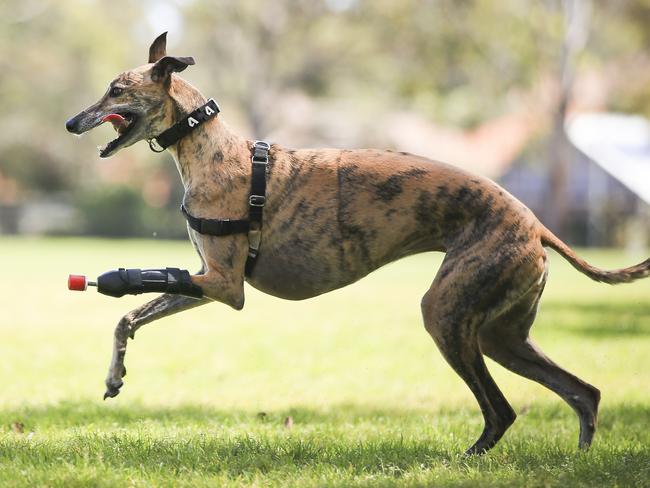
Her forever family could choose a new name for her when the time came.
Nora and Ed took Millie straight to Mosman Veterinary Hospital, meeting with vet Abbie Tipler.
When Dr Tipler unwrapped Millie’s heavily bandaged leg, they were met with a horrific sight.
Millie was essentially missing her entire paw. There were no toe pads, just a raw, bloody stump.
Scar tissue had begun to form, indicating Millie’s injury was several weeks old. The wound had not even been properly cleaned.
It was a miracle she had not developed a lethal infection.
Reconstruction was not possible – there simply was not enough foot left to work with.
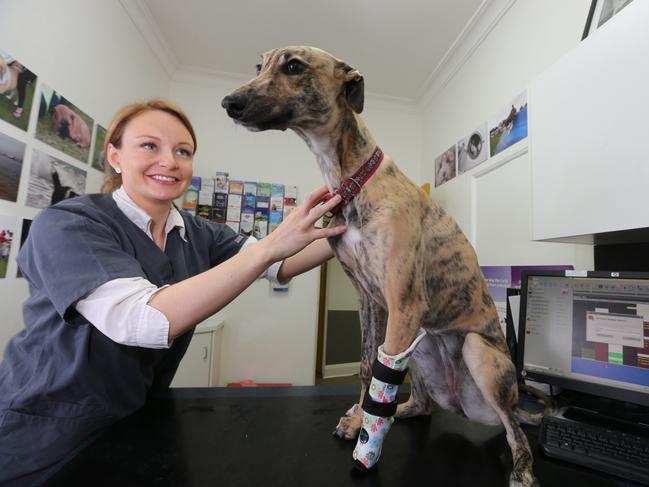
The only other option, it seemed, was to amputate her front left leg. But architect Ed was reluctant — and he had an idea. Fortunately, Dr Tipler was on the same page.
They would try fitting her with a prosthetic paw. Millie was about to become Australia’s first bionic dog.
A US company produced a prosthetic foreleg and paw made from moulded plastic, rubber pads and foam inserts into which Millie’s leg would fit snugly.
There was a collective holding of breath the day Millie’s $1200 prosthetic was clicked into position for the first time. But the courageous canine, by then six months old, took to her new limb as if it had always been a part of her.
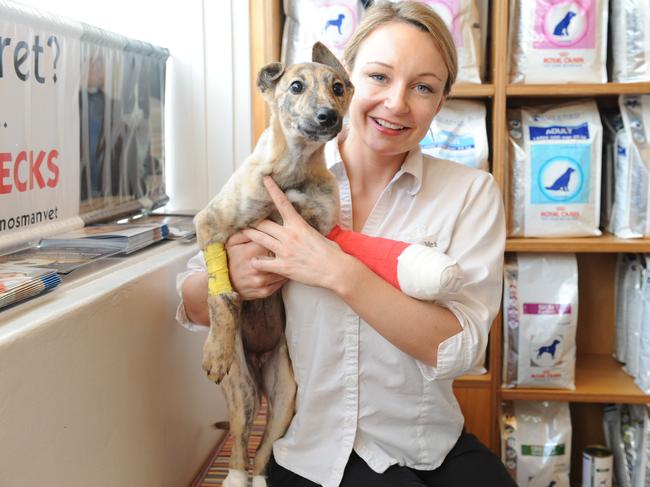
She was the first dog in Australia to have a prosthetic foreleg due to a traumatic amputation.
After everything she had been through, Nora and Ed decided they could not bear to let Millie go and officially adopted her.
Once she was fully-grown, Millie chalked up another first: she is now believed to be the first dog in Australia to use a 3D-printed prosthetic. The technique is much faster and less expensive than traditional prosthesis manufacture.
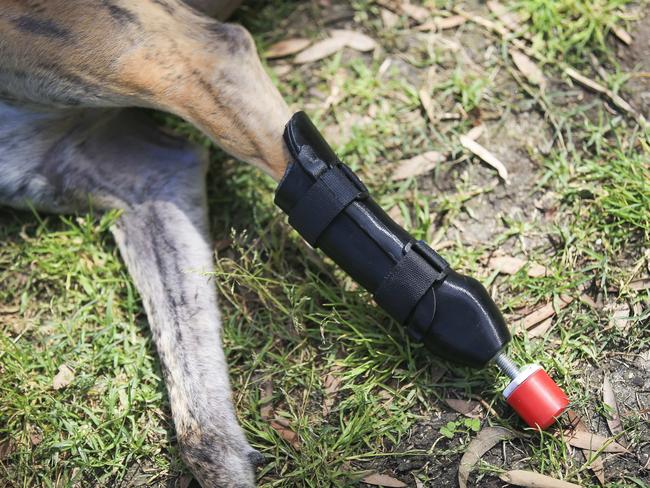
Now six, Millie’s prosthetic paw only needs replacing when it wears out, which is usually every 12 to 18 months.
“She really puts them to work. She loves using them in the water, running, digging,” Nora said.
“Whenever we see her using her leg we know we made the right decision.”
* This is an edited extract from Miracle Mutts by Laura Greaves (Penguin, $34.99)

